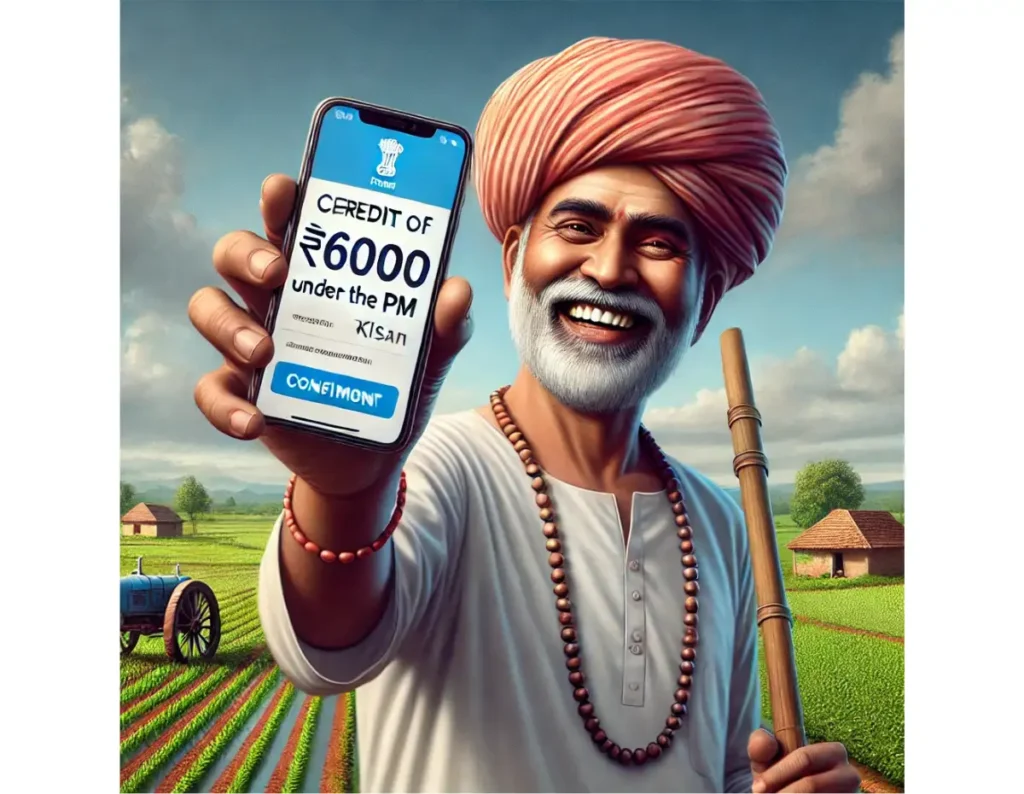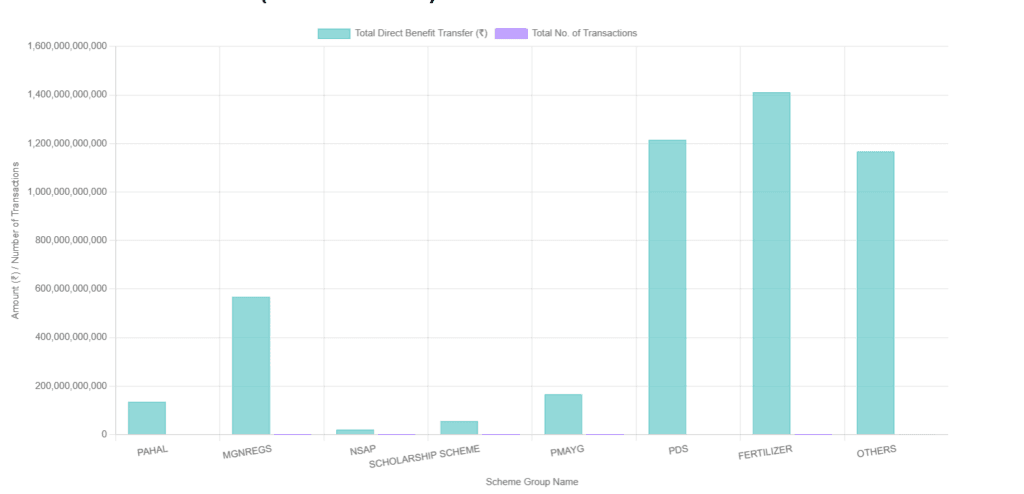As a banker, I’ve seen countless faces of hope and despair. Poor families, struggling to make ends meet, would come to me asking about financial support promised by the government. Many times, they didn’t even know if they were eligible for a scheme or if any money had been approved for them. Even when funds were allocated, corruption and middlemen ensured that only a fraction reached them. For example, if ₹1,000 was approved, they might receive just ₹100—or worse, nothing at all.
This heartbreaking reality changed with the launch of the Direct Benefit Transfer (DBT) scheme by the Government of India in 2013. DBT was designed to ensure that every rupee of financial support like PMAY, Airavata or many more reaches the beneficiary directly, without leakage or delay. Today, as a banker, I see the smiles on people’s faces when they receive their entitlements directly in their bank accounts. It’s not just about money; it’s about dignity, trust, and hope.

Table of Contents
What is DBT and Why Was It Launched?
DBT is a system where government welfare benefits are transferred directly into the bank accounts of beneficiaries. It was launched to:
- Eliminate corruption: Complete elimination of middlemen who launder money and embezzle money.
- Ensure transparency: Making every transaction trackable and accountable. So that the government can know whether the amount of scheme benefits given by them is reaching its right beneficiaries or not and at the same time the beneficiary can also know whether his amount has been approved or not.
- Empower beneficiaries: Give people control over their rights. So that they do not have to go to any government office or middleman for any information related to the government benefits.
Before DBT, beneficiaries had to visit government offices repeatedly to check on their applications, often facing delays and exploitation. DBT changed this by leveraging technology, Aadhaar, and bank accounts to create a seamless and transparent process.
Key Features of DBT
- Aadhaar Integration: Linking Aadhaar numbers to bank accounts ensures funds are transferred directly to the intended recipients, reducing duplication and fraud in the system.
- Direct Transfers: Government subsidies, welfare benefits, and financial assistance are sent directly to beneficiaries’ bank accounts, eliminating the need for intermediaries and reducing leakage of funds.
- Real-Time Tracking: Both the government and beneficiaries can monitor payment status in real-time from Official DBT website, ensuring transparency and accountability in the disbursal process.
- Wide Coverage: DBT covers over 300 central and state schemes, benefiting citizens through programs related to food security (e.g., Public Distribution System), educational scholarships, pensions, housing assistance, and healthcare subsidies.
- Efficient Delivery:
The streamlined process ensures quicker disbursal of benefits and subsidies, promoting a seamless experience for beneficiaries. - Digital Payments Adoption:
DBT encourages financial inclusion and usage of digital payment platforms, thereby promoting a cashless economy in rural and urban areas, for which the government is vigorously working towards Digital India.
Impact of DBT: A Game-Changer for India
From the Beneficiary’s Point of View:
- No More Middlemen: People receive the full amount they are entitled to without deductions by any intermediaries.
- Convenience: The payments are directly credited into the bank accounts of the beneficiaries, saving them from lengthy paperwork or running around government offices, and ensuring they receive their entitled benefits as quickly as possible.
- Transparency: Beneficiaries can track payment statuses in real-time, reducing their dependency on local officials for information about their schemes and about their financial assitistance money by govt.
From the Government’s Point of View:
- Reduced Leakage: Billions of rupees are saved by eliminating fraudulent claims and corruption.
- Efficient Delivery: The system ensures faster disbursement of funds, boosting public satisfaction and operational efficiency.
- Data-Driven Decisions: Through this scheme the government gets to know the real-time data, which helps the government to improve the schemes and target the right beneficiaries.
- Cost Savings: Digitizing benefit distribution reduced administrative costs and also allowed government staff to be utilized more effectively for other tasks.
- Greater Trust in Governance: For decades, the government has been bringing benefits and schemes for the needy, but these were not reaching the needy beneficiaries properly. People were also tired and had lost hope. But with the help of DBT, transparent and efficient transfer, the trust of citizens in government welfare programs is increasing.
How to Register for DBT
To apply for DBT, you need a bank account, an Aadhaar card, and a basic understanding of the financial assistance schemes available in India. Follow steps:
- Open a Bank Account: Ensure that your account is operational and Aadhaar-linked. If you do not have a bank account then open it in any government bank, and the bank account should be a savings account
- Aadhaar Seeding: Visit your bank branch or use online methods to seed your Aadhaar. Sometimes due to some technical error the bank is not able to link your Aadhaar, so you need to make sure that your Aadhaar is linked to the account.
- Apply for Schemes: You can visit MyScheme Portal or DBT official site to explore and apply for DBT-enabled schemes.
- Track Payments: Monitor DBT payments through DBT Bharat or your bank’s mobile application.
DBT’s Growth Over the Years
Here’s a year-by-year breakdown of how DBT has grown:
Total Direct Benefit Transfer (Cumulative):
₹41,49,509 Cr
Year Wise Fund Transfer:
DBT Fund Transfer Year-wise Bar Chart
Source: https://dbtbharat.gov.in/
Direct Benefit Transfer Details (FY-2024-2025):

Source: Official Website of DBT
What Has Changed After DBT?
- For Beneficiaries:
- They no longer have to visit government offices repeatedly.
- They receive the full amount directly into their bank accounts without delays or deductions and also they got SMS notification about the credit.
- Beneficiaries are better informed about their rights and entitlements under various government schemes.
- Many individuals, especially in rural areas, have opened bank accounts for the first time to receive DBT payments.
- Digital transfers ensure that money reaches the right person without risks associated with cash disbursements.
- For the Government:
- DBT has significantly curbed fraudulent claims and bribery in welfare schemes.
- Administrative costs have decreased, saving taxpayers’ money.
- Welfare delivery has become more efficient and transparent.
- Improved efficiency and reduced corruption have enhanced trust in government initiatives.
References
FAQs
1. What is the primary goal of DBT in India?
DBT aims to eliminate intermediaries, reduce corruption, and ensure that government benefits are directly transferred to beneficiaries’ bank accounts.
2. How can I check whether I am eligible for DBT benefits?
Direct Benefit Transfer (DBT) is a process where government subsidies and benefits are directly transferred to eligible beneficiaries’ bank accounts. To check if you are eligible for DBT benefits, see our home page and check all the schemes.
3. Can I receive DBT payments without linking my Aadhaar to my bank account?
In most cases, Aadhaar linking is required for seamless benefit transfers, but there are exceptions for certain schemes.
4. What should I do if I don’t receive my DBT payment?
First, check your bank account and DBT tracking portal for payment status. If there’s an issue, contact your bank or the scheme’s helpline.
5. Is DBT only for rural beneficiaries?
No, DBT benefits both rural and urban beneficiaries, covering a wide range of schemes like scholarships, pensions, and food security.
6. What types of government schemes are included under DBT?
DBT covers over 300 schemes related to education, healthcare, pensions, food security, housing, and more.
7. How does DBT help in reducing corruption?
Since payments are made directly to beneficiaries without intermediaries, DBT prevents fund leakage and eliminates opportunities for bribery.
8. What role does technology play in DBT’s success?
Technology, including Aadhaar integration, real-time payment tracking, and digital banking, ensures efficient and transparent fund transfers.
Conclusion: A Brighter Future with DBT
As I said earlier, the struggle to access one’s rightful benefits was a common issue. But with DBT, we’ve seen significant changes—timely payments, reduced corruption, and more transparency. It’s clear that this system is reshaping how welfare schemes reach the people who truly need them, making the process simpler and more efficient.


